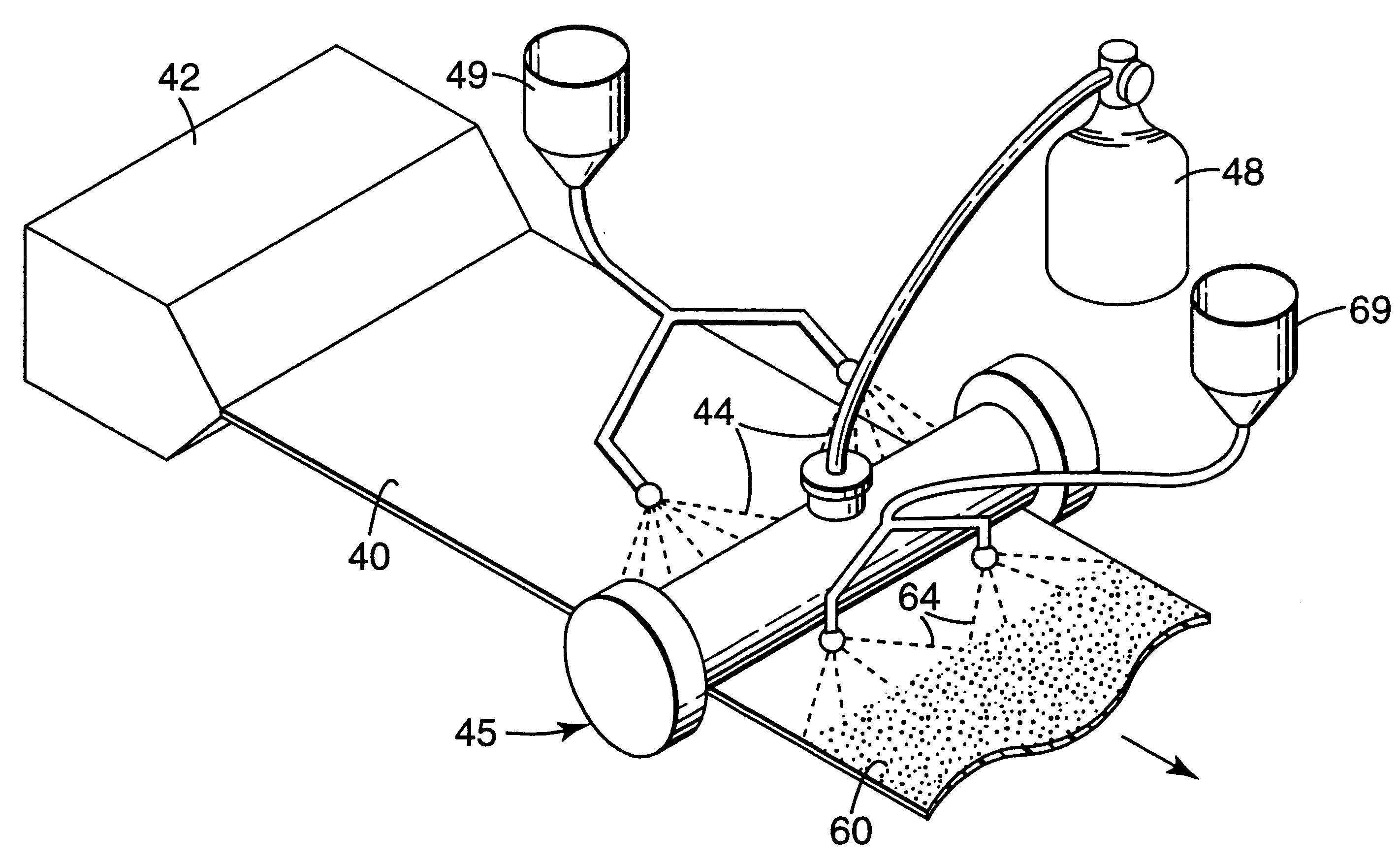Method of making articles in sheet form, particularly abrasive articles
a technology of abrasive particles and a sheet form, which is applied in the direction of manufacturing tools, grinding devices, other chemical processes, etc., can solve the problems of poor or inadequate adhesion of abrasive particles to the polymer backing, time and energy consumption, and common coating processes that are comparable slow and cumbersom
- Summary
- Abstract
- Description
- Claims
- Application Information
AI Technical Summary
Problems solved by technology
Method used
Image
Examples
example 1
and Comparative Examples A and B were tested for wear resistance using a Taber Abrasion Tester, Model 503, available from Taber Industries of Tonawanda, N.Y. A sample was placed on the rotating platform and a "H-18" wheel was brought into contact under a 250 gram load. The wheel contacted the sample article and "abraded" the sample. After the requisite number of cycles, the weight loss of the sample was measured. The number of cycles and the results are listed in Table 1, below.
example 2
, a non-skid traction article, was prepared by extruding a blend of 99% by weight ethylene acid ionomer (commercially available from DuPont under the trade designation "SURLYN 1705") and 1% carbon black concentrate (50% "SURLYN 1705" and 50% carbon black by weight). (The resulting extrudate was thus 0.5% by weight carbon black). The blend was extruded to 0.38-0.64 mm (15-25 mil) thick 30.5 cm (12 inch) wide web using a conventional single screw extruder at 100-130 rpm and 246.degree. C. (475.degree. F.). The film was cast using a vacuum assist on the casting roll. The ionomer sheet was softened with the flame sprayer as described in Example 1.
Coal slag particles (ANSI Grade 50 / 70, having an average particle size of between about 215 and 300 micrometers) were embedded into the softened web and further processed as described in Example 1. The speed of the web was approximately 6-9 meters / minute (20-30 ft / min).
example 3
, a non-skid traction article, was prepared as described in Example 2, except that methane gas was fed at a rate of 394 cm.sup.3 sec (50 SCFH) and air at a rate of 3836 cm.sup.3 / sec (488 SCFH) in order to create the flame.
PUM
| Property | Measurement | Unit |
|---|---|---|
| Angle | aaaaa | aaaaa |
| Thickness | aaaaa | aaaaa |
| Proximity effect | aaaaa | aaaaa |
Abstract
Description
Claims
Application Information
 Login to View More
Login to View More - R&D
- Intellectual Property
- Life Sciences
- Materials
- Tech Scout
- Unparalleled Data Quality
- Higher Quality Content
- 60% Fewer Hallucinations
Browse by: Latest US Patents, China's latest patents, Technical Efficacy Thesaurus, Application Domain, Technology Topic, Popular Technical Reports.
© 2025 PatSnap. All rights reserved.Legal|Privacy policy|Modern Slavery Act Transparency Statement|Sitemap|About US| Contact US: help@patsnap.com



